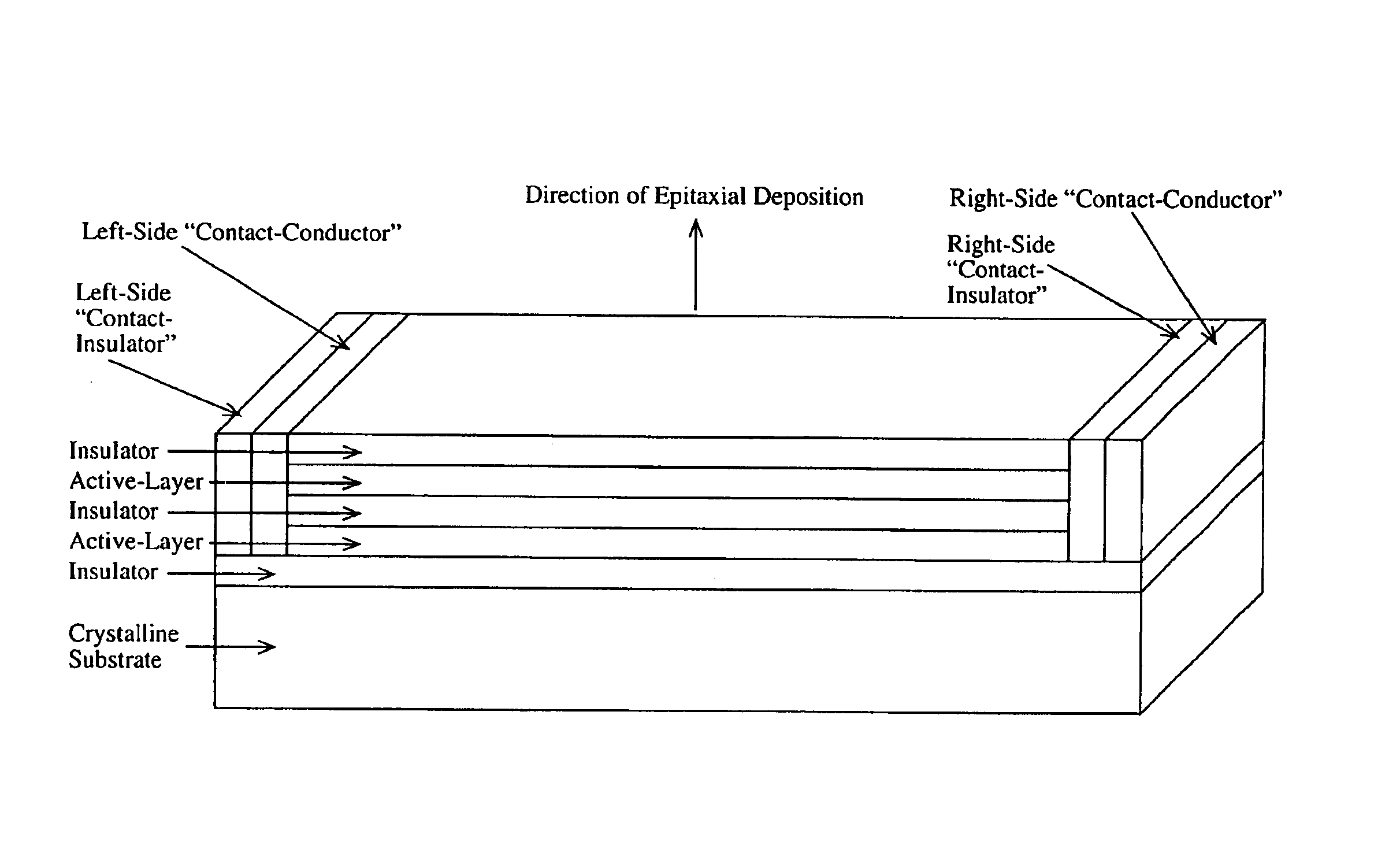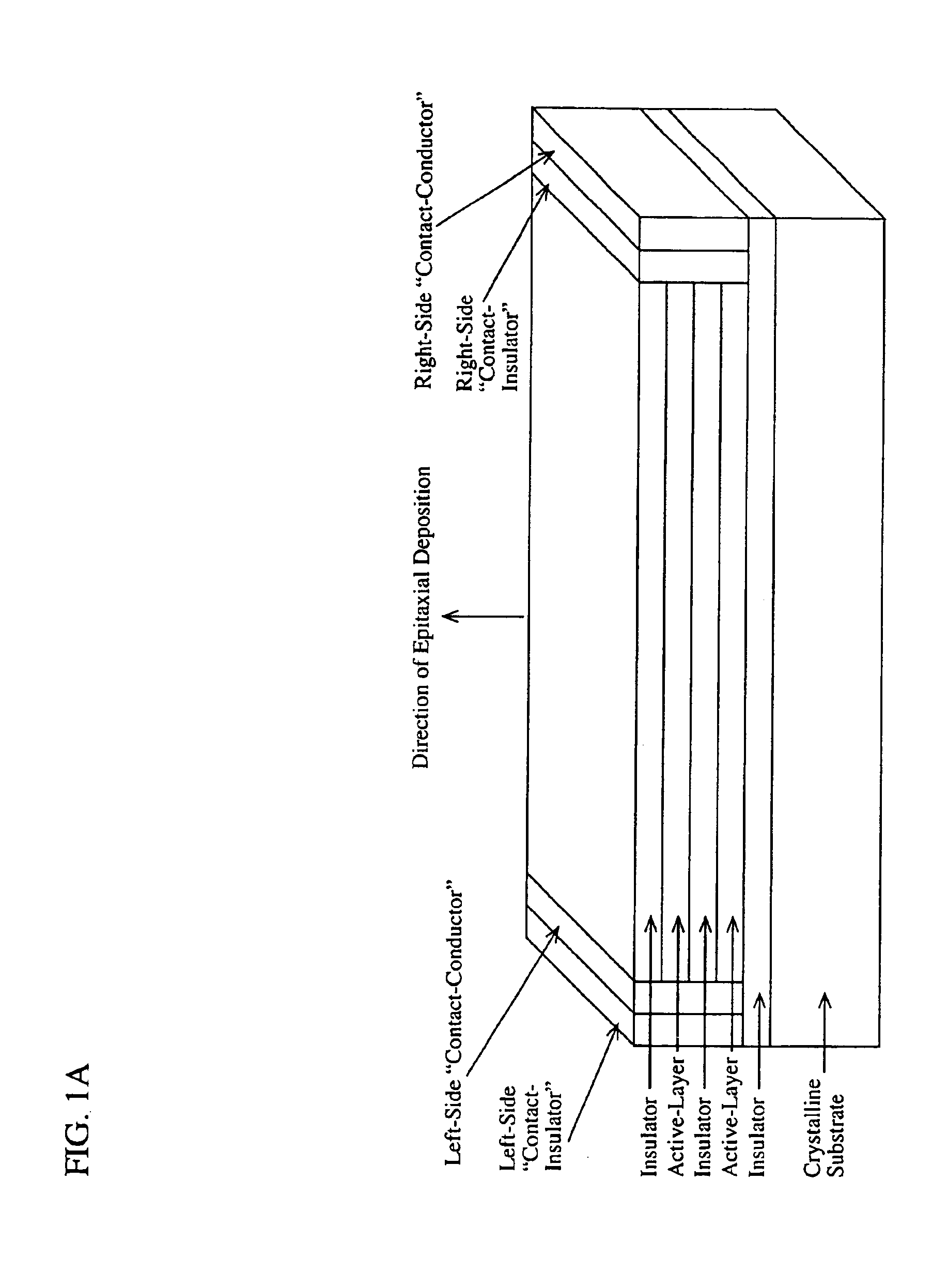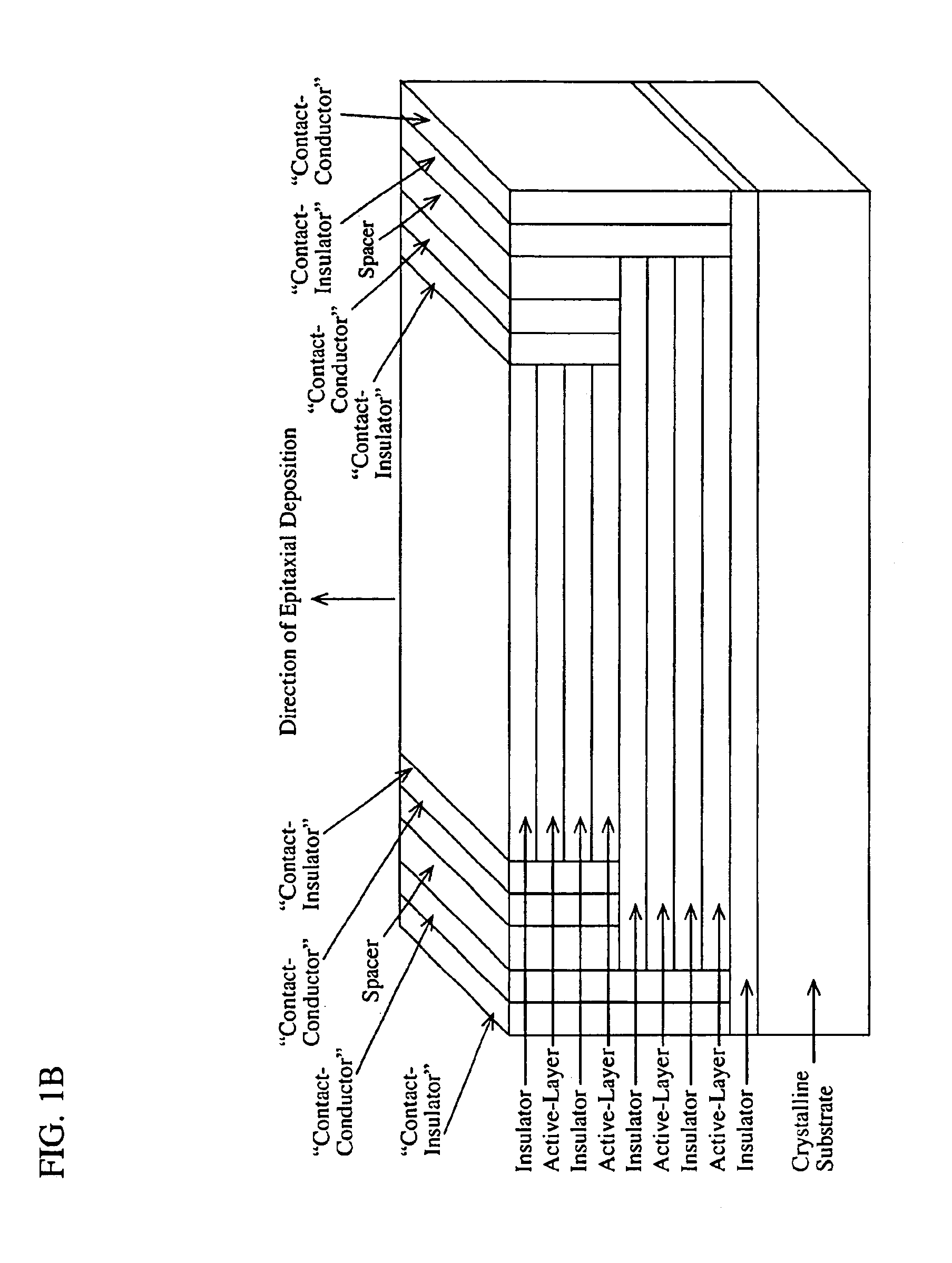Wavelength-selective photonics device
a wavelength-selective, photonics technology, applied in the direction of lasers, semiconductor lasers, radiation controlled devices, etc., can solve the problems of limiting the wavelength range of the device, limiting the energy of the opto-electronic transition between bound states, and elusive efficient light emission prospects
- Summary
- Abstract
- Description
- Claims
- Application Information
AI Technical Summary
Benefits of technology
Problems solved by technology
Method used
Image
Examples
Embodiment Construction
[0068]Advanced thin-film deposition techniques, such as Molecular Beam Epitaxy (MBE) and Atomic Layer Deposition (ALD) for example, enable the fabrication of very sophisticated doping and heterojunction profiles in the direction of epitaxial growth. Quantum Wells (QWs) require reduced dimensionality in one direction only, and for that reason are then easy to be made with such techniques. Quantum Wires and Quantum Dots require “reduced dimensionality” in two or three directions, respectively. Therefore, examples of quantized structures will, by default, mean Quantum Wells. However, this should not be seen as a conceptual limitation. If and when it becomes equally easy to fabricate Quantum Wires and Quantum Dots, the same concepts can (with suitable adaptations) also be used to implement these new device concepts, which can use and take advantage of quantization in more dimensions.
[0069]FIG. 1a shows a schematic of the device architecture according to the present invention. In FIG. 1b...
PUM
 Login to View More
Login to View More Abstract
Description
Claims
Application Information
 Login to View More
Login to View More - R&D
- Intellectual Property
- Life Sciences
- Materials
- Tech Scout
- Unparalleled Data Quality
- Higher Quality Content
- 60% Fewer Hallucinations
Browse by: Latest US Patents, China's latest patents, Technical Efficacy Thesaurus, Application Domain, Technology Topic, Popular Technical Reports.
© 2025 PatSnap. All rights reserved.Legal|Privacy policy|Modern Slavery Act Transparency Statement|Sitemap|About US| Contact US: help@patsnap.com



